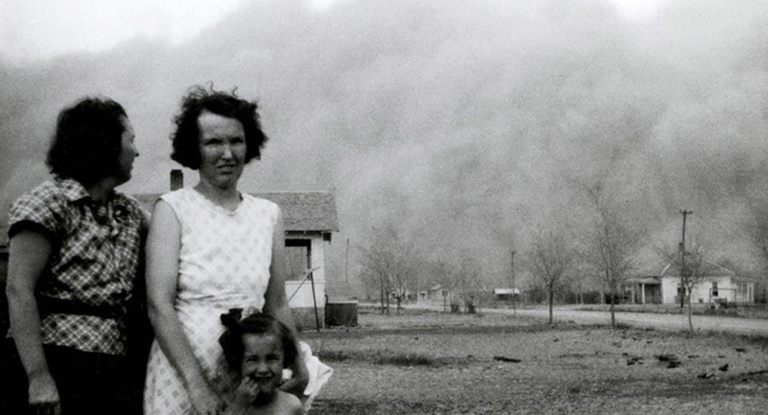
 Ken Burns Classroom
Ken Burns Classroom
 Ken Burns Classroom
Ken Burns Classroom

Nothing could have prepared the country for the hardship it would face during the stock market crash of 1929, the man-made agricultural catastrophe of the Dust Bowl, and the economic collapse that shaped the 1930s. Unemployment was as high as 25% during the Great Depression. President Franklin Delano Roosevelt would enter office in 1933 and implement his New Deal policies to provide work for Americans in the form of the Works Project Administration (WPA), and the Civilian Conservation Corps (CCC). His Farm Security Administration (FSA) would introduce new farming techniques and support farmers and impoverished sharecroppers across the country. Roosevelt’s fireside radio chats would seek to reassure and soothe the public. As America entered a World War in December of 1941, industry would shift all of its production toward supporting the war effort. The country would face widespread rationing and short supplies as the nation held its breath.